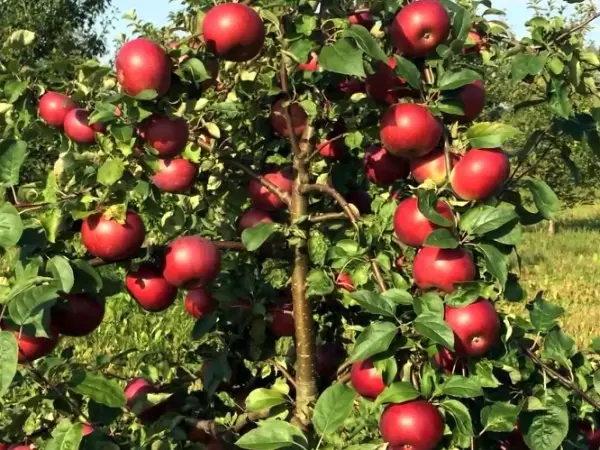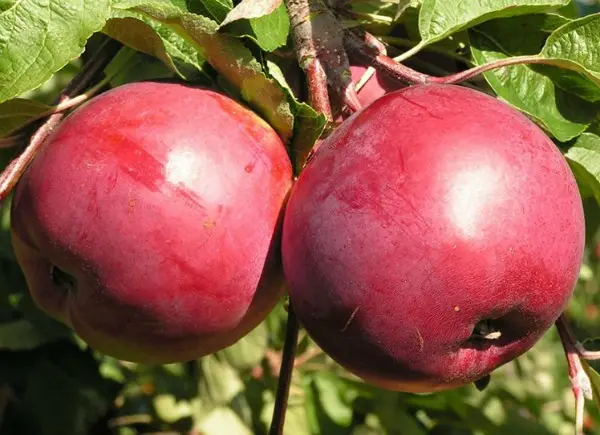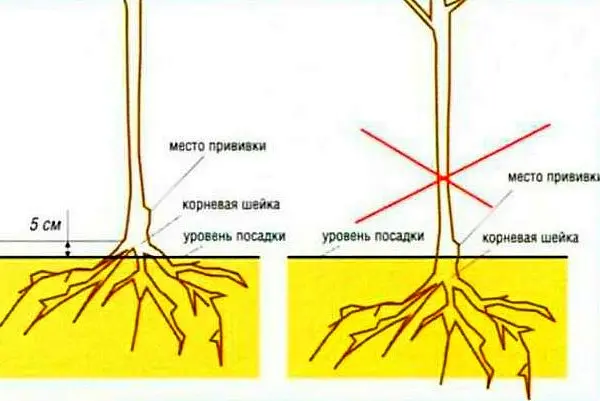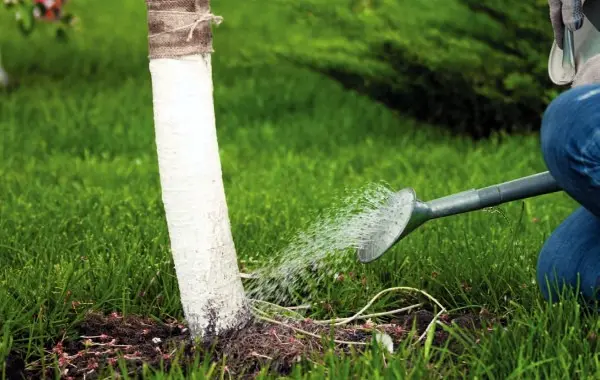Contents
Apple trees are universally recognized favorites of gardeners in all corners of the world, of course, excluding those regions in which there are no suitable growing conditions. The abundance of varieties of apple trees allows you to choose a variety that fits perfectly into the garden composition at your dacha. In this article we will talk about the Belarusian sweet apple variety, one of the best representatives of late winter fruit trees.
Variety description
The variety “Belarusian Sweet” was created by breeders from the Belarusian Research Institute of Fruit Growing Grakovich, Evdokimenko, Kovalenko and Marudo.
Medium-sized apple trees grow quite quickly – by the 8th year of living in the garden, they reach up to 3 meters in height. The crown is not particularly dense, rounded in shape, somewhat cone-shaped and slightly drooping. This form facilitates the care of the tree, as well as harvesting.

Apples of the “Belarusian Sweet” variety are usually medium or large in size, weighing from 140 to 200 grams. They are rounded, smooth, very pretty, so they will decorate not only the tree, but also your dining table. The peel of apples is green-yellow, turning yellow when ripe. However, yellowness rarely shows through a solid red blush. The pulp of the fruits of the “Belarusian sweet” variety is white, not very dense, but at the same time extremely tender. The taste is sweet, without impurities of sourness, the aroma is weak, but stable.
For 100 grams of apple pulp, there are:
- 12% dry matter;
- 9,5% sugar;
- 0,2% titratable acids;
- 11 mg of ascorbic acid;
- 1113 mg of P-active substances.
The fruits of the apple tree of this variety ripen in mid-November, but sometimes ripening occurs earlier, approximately in mid-late October.

Characterization
“Belarusian Sweet” exhibits high frost resistance, surviving temperatures down to -36 °C without critical losses. This is combined with high productivity and precocity. Already for the 5th year of growth, the apple tree gives up to 35 kilograms of apples from one tree. It should also be noted that the variety is highly immune to scab, which allows it to be grown without fear for the size and quality of the crop.
A big plus of the variety is that when ripe, apples do not fall off the branches. However, if you overexpose them on a tree, then their shelf life is significantly reduced. So, with timely removal, they can be stored until February, with late – only until mid-December.
Curiously, using clonal rootstocks (for example, 54-118 or 5-25-3) can speed up fruiting. If an ungrafted tree bears fruit for 2-3 years of life, then with a clonal stock it gives a crop already in the first year of growth. Considering that the variety bears fruit at the same level every year, this is a good way to get delicious apples without a long wait.
Planting and care
Having dealt with the advantages and distinctive characteristics of the “Belarusian Sweet” variety, you can begin a description of planting seedlings.

It is best to choose a well-lit place, without strong winds (this contributes to better rooting and growth of the seedling at first). It is desirable that groundwater does not lie too close to the surface, since excessive moisture harms the root system of the apple tree.
The preparation of the landing pits should be done in about a week and a half, so that the soil on the walls dries out a little. The depth of the pit should be at least 60 centimeters, and the width should be about 1 meter, but it varies depending on the development of the roots of the seedling. The bottom of the pit must be loosened and mixed with walnut shells and wood ash. It is recommended to add humus and superphosphate to create an additional “pillow” of nutrients, however, in this case, it is necessary to sprinkle the humus with ordinary earth so that the roots of the seedling do not get burned. Before planting, the roots of the seedling are straightened, and then placed in a hole. The pit is covered with earth, carefully tamping it from time to time. At the end of the procedure, the hole is abundantly watered. Watering is repeated after a week, bringing at least 30 liters of water under each tree.
Remember that the basal neck should be 5-7 centimeters above ground level.
It is recommended to tie the seedling to the support pegs to give greater stability. The distance between the trees should be at least 4 meters so that they do not interfere with each other’s development.

Scheme of planting an apple seedling
Apple trees of this variety, in fact, do not require any special care, different from the care of any other variety. First of all, the description of wellness procedures and care concerns watering. In moderately hot summers, 1 watering per month is enough, while pouring water into the near-stem circle is necessary until the moisture is absorbed. If the summer turned out to be dry, watering should be frequent up to 2 times a month, approximately every 2 weeks.
In the spring, before the buds open, and in the fall, after the harvest, the apple trees must be pruned. Despite the fact that the variety is resistant to scab, with insufficient care for the trunk and crown of trees, you can create a favorable environment for the development of other fungal diseases. Therefore, it is important to remove old, withered or damaged branches, as well as old bark. In the spring, it is necessary to whitewash the trunks with garden lime, it is also necessary to process cuts on branches with it.
In the first years, given the precocity of the variety, it is necessary to thin out the fruits and ovaries in order to improve fruiting in subsequent years and not deplete the tree in the early stages of growth. As soon as the ovaries have formed, you need to remove the central fruit.

In order for the variety to show itself in all its glory, we must not forget about top dressing. Trees respond well to organic fertilizers (slurry, chicken manure). You can combine top dressing with watering – in this case, you need to dilute the slurry 1:10, and chicken manure 1:30. In the spring, trees of this variety will be delighted with the introduction of urea. You will need 1 tablespoon of the product dissolved in 1 bucket of water. On the eve of flowering, it is recommended to add 120 grams of superphosphate and 40 grams of potassium chloride to support the tree. In the autumn, after the crop is harvested, it is necessary to add 8 kilograms of compost, 75 grams of superphosphate, 24 grams of potassium chloride and 18 grams of urea to each tree to increase the immunity of the tree and prepare it for hibernation.
Despite the fact that the variety exhibits high winter hardiness, it would be useful to mulch the near-stem circle on the eve of the first frosts, as well as wrap the trunks with protective material to protect them from rodents and hares.
Fighting diseases and pests
As already noted, the variety is well resistant to scab, but this does not mean that it is not necessary to carry out preventive treatments with special preparations. By increasing the immunity of a tree, you only strengthen it. So, for the complex prevention of diseases caused by fungal spores, in the spring it is necessary to spray trees with fungicides of complex action, such as Fitosporin, Topaz.

To prevent the development of colonies of harmful insects, you can use a corrugated paper hoop trap. It is also recommended to treat trees and the soil around trees with insecticides such as Karbofos or with Ecoberin and Zircon preparations.
Video “Apple variety “Belarusian sweet”
We offer you to look at a small review of the Belarusian sweet apple tree variety.









